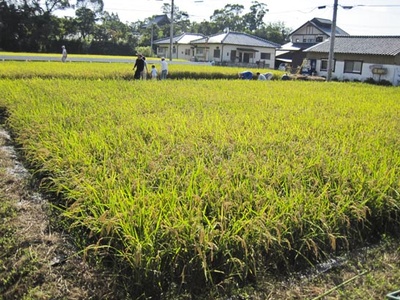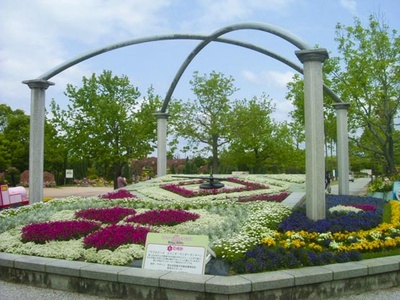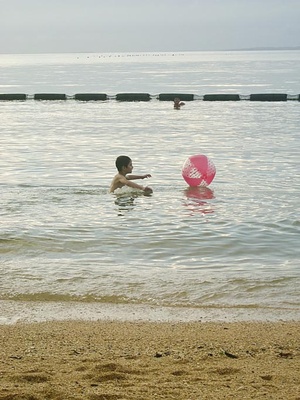O clima no Japão varia muito conforme as estações, possibilitando caracterizar bem cada uma delas. É difícil acreditar que houve dias em que passei bastante calor aqui. Mal saía do banho e já estava suando novamente. Eu havia deixado todas as blusas de gola alta, casacos e cobertores guardados, mas ultimamente tenho retirado tudo das gavetas para voltar a usar.
Em setembro, começou o outono (aki). É tempo de caquis e vale a pena experimentar o kurigohan (arroz com castanhas). Nesta época, a coloração das folhas das árvores varia desde o vermelho até amarelo e forma uma bela paisagem que pode ser apreciada até novembro. Este fenômeno de troca de cores das folhas chama-se kouyou. Parece que para se ter um bonito kouyou, é preciso ter uma grande diferença de temperatura entre o dia e a noite, as folhas devem receber grande quantidade de raios ultravioleta e também deve haver umidade adequada para que as folhas não sequem.
Gostei do clima do outono, pois é agradável, ensolarado com brisas frequentes e temperatura mais fresca que o verão, não chegando a ser um frio congelante. O péssimo é que acontecem tufões às vezes. É um vento muito forte, que não só levanta a areia de parques como pode destruir casas e a chuva forte que vem chega às vezes a causar alagamentos e mortes.
É perigoso sair de casa quando há previsão de passagem de tufões pela região. O último tufão forte que passou aqui foi o Melor e fiquei assustada com a indiferença demonstrada por alguns estudantes japoneses, que continuaram treinando tênis e beisebol nos campos externos da universidade, durante os ventos fortes que levantavam a poeira e fizeram voar placas de sinalização de trânsito. Enquanto isso, eu estudava na biblioteca e até cogitava passar a madrugada por lá. Como não estou acostumada, fiquei com receio, mas para eles é normal e conseguem distinguir um tufão realmente perigoso.
O outono é a época de colheita de arroz. Tive oportunidade de conhecer parte do processo. Utilizamos um facão para colher o arroz e depois penduramos os maços para que secassem ao sol por algumas semanas. Após a secagem, fizemos a separação dos grãos com a ajuda de uma máquina simples, para retirar talos da planta, palha do arroz, torrão de terra, pedras, pedaços de saco de juta, estopas, entre outros. É claro que existem máquinas que agilizam todo o trabalho, mas fizemos pelo método tradicional para conhecer como era feito no passado.
Em breve começará o inverno (fuyu), que vai de dezembro a fevereiro. É seco e regularmente o sol aparece. O ofuro (banheira de água quente) e onsen (águas termais) são opções para relaxar e esquentar-se nessa estação. Enquanto o oeste e o norte do Japão são extremamente frios, a parte sul tem um tempo mais agradável, onde a temperatura raramente chega abaixo dos 0 °C. No norte neva bastante e é onde acontece o mais famoso festival de esculturas de neve, que é o de Sapporo, em Hokkaido. São feitas esculturas gigantescas de neve e gelo, e vêm pessoas de todos os lugares do mundo para apreciar e participar. No caso de Fukuoka, não estou muito ansiosa para ver como é o inverno na região porque a temperatura e tempo que estão fazendo ultimamente estão bem agradáveis e na minha opinião, se seria bom se fosse sempre assim.
A primavera (haru) começa em março. A chegada da primavera é marcada pelo florescimento das ameixeiras e das cerejeiras (sakura). Especialmente nessa época, o Sakura tem um importante papel também na culinária japonesa. Doces, sorvetes, bebidas e várias guloseimas ganham o toque das flores tanto no formato quanto no sabor. O “sakura-mochi”, bolinho de arroz enrolado na folha de cerejeira é um dos pratos mais tradicionais.
Muitos japoneses gostam desta época, pois não faz muito calor nem muito frio. Não chove tanto e as flores com cores vivas enfeitam os jardins deixando as ruas mais bonitas. A primavera japonesa vai até maio. Apreciar as flores das cerejeiras é um passatempo popular e muitas festas são feitas sob as cerejeiras floridas para celebrar a chegada da primavera. Este costume é chamado hanami – apreciação das flores. Nesta estação, as previsões do tempo regularmente incluem as datas em que as flores aparecerão nas diferentes partes do país.
Em meados de junho começa a chover. A estação das chuvas (tsuyu) é importante para os agricultores, principalmente à colheita do arroz, já que o arroz é uma planta hidrófila, sendo as culturas irrigadas são as mais desejáveis. O céu está quase sempre escuro, as roupas no varal demoram muito tempo a secar e chove quase todos os dias. É tempo de se carregar o guarda-chuva todos os dias e período em que as botas de plástico chegam às vitrines. As capas de chuva também ocupam lugares de destaque nos mercados. É difícil encontrar alguém que goste desta época. O que é bem inconveniente nesta época é o barulho das cigarras, principalmente para quem mora perto de parques e áreas de muito verde. Às vezes, eu torcia para chover porque assim o barulho das cigarras diminuía.
O período chuvoso dura quase um mês e depois disso, o tempo torna-se extremamente quente. O verão é muito úmido e quente. É desagradável ficar dentro de ambientes fechados sem ar-condicionado ou ventilador. É tempo de freqüentar praias e ver a diferença de tamanho dos biquínis do Japão com os do Brasil.
As japonesas protegem-se do sol usando luvas, sombrinhas, casacos e chapéus. Por mais que esteja calor, algumas japonesas ficam totalmente cobertas para se proteger dos raios ultravioletas. Os transportes públicos têm suas temperaturas ajustadas. Vale a pena contemplar e apreciar os fogos de artifício, que coincidem com as férias escolares. Coloridos, fazem parte da cultura japonesa. É a época apropriada para escalar o Fuji, já que não há neve. Apesar disso, o frio é inevitável. No alto da montanha, temperaturas chegam a menos de 10 graus. Além do frio, cansaço, falta de ar, tonturas e mal estar podem acompanhar o aventureiro e por isso, ao terminar a escalada, fica o sentimento de “Vale a pena escalar uma vez na vida, mas acho que duas vezes, não”.
Da outra vez que vim ao Japão, não consegui perceber diferenças além do fator temperatura, pois ficava o dia inteiro dentro da fábrica e nos finais de semana não passeava muito. Desta vez, é interessante ver claramente que as diferenças entre as estações vão além de graus Celsius e que os costumes japoneses são fortemente influenciados por isso. Agora vi de perto que em cada nova estação mudam-se as cores, variam as temperaturas e modificam-se os hábitos dos japoneses.
© 2009 Silvia Lumy Akioka










